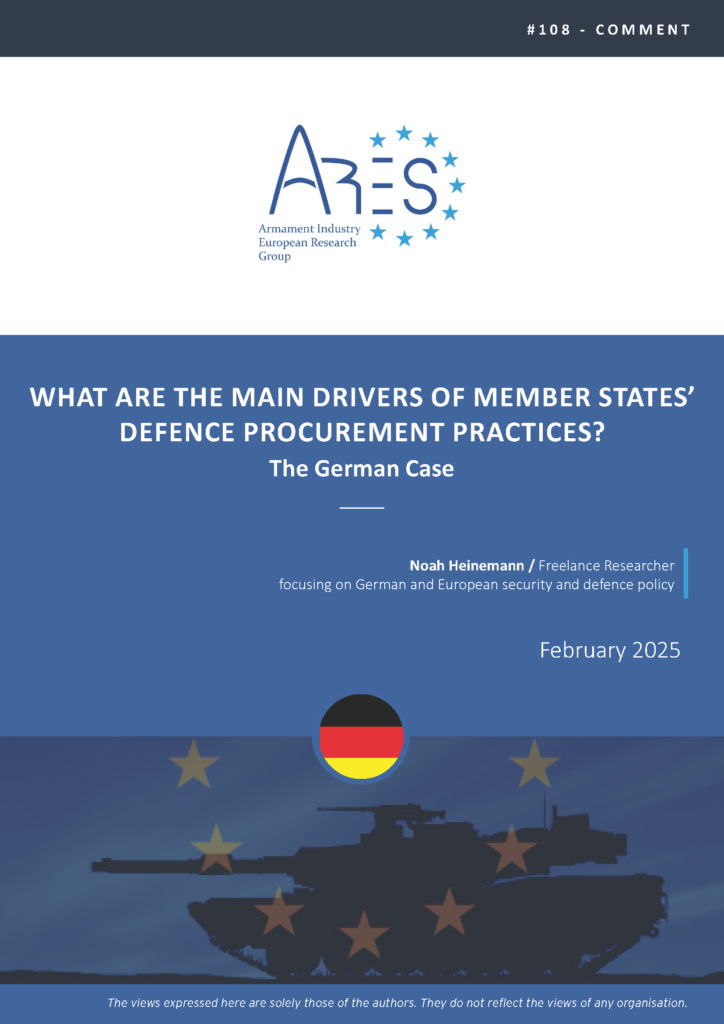Notes / ARES Group - The Armament Industry European Research Group
4 février 2025
What Are the Main Drivers of Member States’ Defence Procurement Practices? The German Case

Since the Russian invasion of Ukraine in February 2022 induced German Chancellor Olaf Scholz to declare a turning point for German security and defence policy, five central rationales have structured Berlin’s military procurement practices. Based on the increased financial backdrop of the Bundeswehr in form of the 100 billion Euro-strong special fund, Berlin has aimed at closing critical military capability gaps, replacing aging military equipment and providing NATO with the promised military forces for the New Force Model. Hence, short time frames and market availability have become the central rationales of German procurement practices. These have in turn motivated the contemporary procurement of market available systems, mostly from the US and in part Germany’s domestic defence-industrial market in its “key technologies”. This procurement pattern is also observable in the European Sky Shield Initiative (ESSI) which was introduced by Berlin to portray German leadership in reinforcing the European pillar in NATO.

